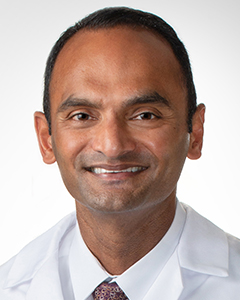Overly large breasts can be a source of emotional stress and physical strain, leading to a range of chronic conditions, including back and neck pain, skin irritation and rashes that won’t go away. They make it difficult to find clothes that fit and can be an obstacle to a more active, athletic lifestyle.
Often, these negatives can be overcome – or at least made tolerable – through a variety of solutions, including diet, sports bras and physical therapy. But for some women, the best answer is breast reduction surgery, also known as reduction mammaplasty.
Medical Reasons to Consider Breast Reduction Surgery
The most common driver for this popular surgery is the pain associated with large breasts. And in places like Florida, where it’s above 80 degrees for more than half the year, it’s difficult to keep the area underneath breasts clean and dry, which can lead to skin damage from severe chafing.
Among the reasons for the surgery:
- Weight of the breasts causes chronic back, neck and shoulder pain (from bra straps digging into the shoulders)
- Chronic rashes or skin irritation under the breasts
- Nerve pain
Psychological/Lifestyle Benefits of Breast Reduction Surgery
Some women can be embarrassed by the size of their breasts and uncomfortable if they draw unwanted attention. Large breasts also can make it difficult to exercise and live a healthy lifestyle. This is particularly true for women in their 30s, 40s and 50s who want to take part in running and other cardio activities.
Self-image also comes into play for women who are unhappy with how their breasts look. With heavier breasts, the nipples tend to point toward the floor. This is altered during breast reduction surgery. The nipple is repositioned when the breast is given a more aesthetic shape in proportion to your body’s frame.
What Happens During Breast Reduction Surgery?
The procedure is usually performed under general anesthesia at a hospital or in an outpatient surgical facility.
The most important part of the procedure takes place in the pre-operation room. There, the surgeon maps out the areas of your breasts that will removed, repositioning of the nipples and determining how the breast will be shaped. For some women, this surgery also represents an opportunity to have more symmetrical breasts – at least half of women have breasts that are not the same size.
The reduction and reshaping can be accomplished through several techniques, including:
- Liposuction: This is the least invasive option and leaves the least amount of scarring. However, this treatment is best for slight and moderate reductions. The best candidates are those with good skin elasticity and little or no sagging to correct.
- Vertical breast reduction: This is best if you need moderate reduction and have more noticeable sagging. This procedure uses two incisions – one around the edge of the areola and the other running from the bottom of the areola to the crease beneath the breast.
- Inverted-T breast reduction: This is best for more significant reductions and sagging. It uses three incisions – one around the edge of the areola, one from the areola to breast crease and the third along the breast crease.
After Breast Reduction Surgery
Following the surgery, you’ll need to spend at least a week letting your body heal, with limited activity. Exercise should be avoided for the first two weeks. But after four weeks, you should be able to resume your normal routine.
To aid the healing process, patients initially wear special bas designed to keep pressure off the incisions. And if there was a significant amount of tissue removed, your surgeon may install a post-operative drain to keep fluids from building up. These are generally removed within a day of the surgery.
Scarring will be determined, in part, by the procedure used. But in most cases, the scars will fade significantly over time.
Is Breast Reduction Covered by Insurance?
Typically, insurers want to see that you’ve first tried nonsurgical alternatives, including weight loss, sports bras, chiropractors, physical therapists, dermatologists and massage therapists. If those fail, your doctor will make the case to your insurer, demonstrating the amount of tissue that would be removed and how you would benefit. Approvals are generally based on the insurer’s thresholds (liposuction is not covered), and whether the surgery is expected to make a significant improvement in a patient’s life.
Choose to Stay in Touch
Sign up to receive the latest health news and trends, wellness & prevention tips, and much more from Orlando Health.
Sign Up





